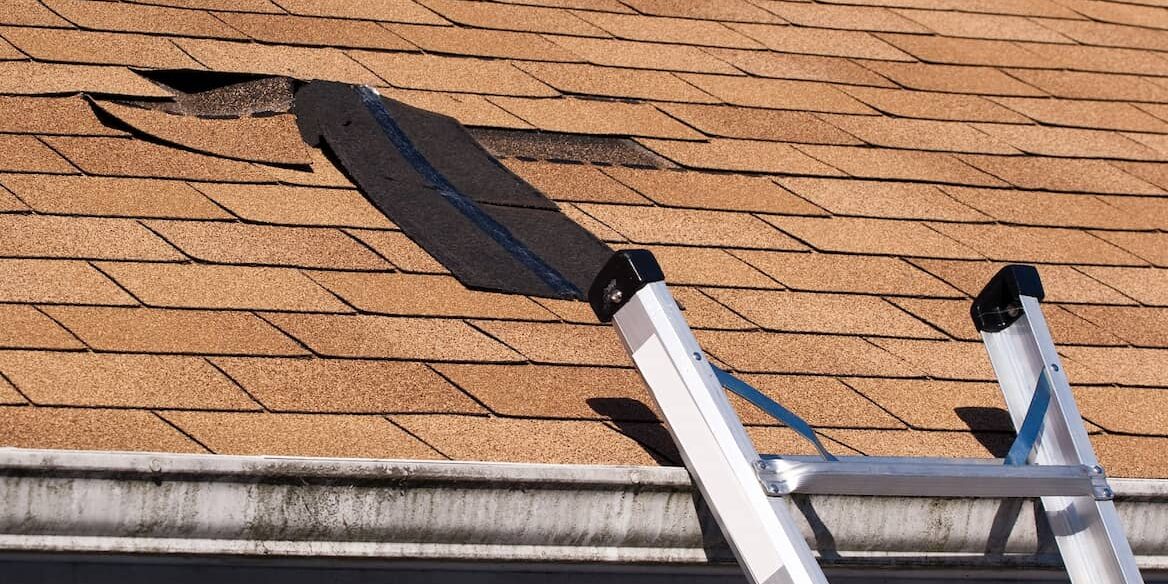Roofs can last around 20 years on average. However, weather conditions, accidents, and various overloads can lead to some unexpected issues during the roof’s lifespan, driving homeowners to have roof repairs that need to be completed before the expected lifespan.
Still, it can be difficult to tell with certainty if it’s time to repair your roof or even if the roof is experiencing issues if you don’t know the types of damage it can withstand.
Read on and learn about the five most common roof damage types that will let you know you need to get in touch with roofing repair experts immediately.
Shingle Repairs
Most residential roofs are covered with shingles. It’s a durable material that protects well against UV rays, strong winds, and other inclement weather, but when those weather conditions turn very harsh, they can also cause some problems. You should immediately contact your roofing contractor if you notice the following:
Broken Shingles – Shingles may break when severely damaged by extreme weather. They must be replaced to avoid leaks.
Lifted Shingles – If shingles curl or shrink, their edges may lift, and water may seep underneath.
Splitting Shingles – Shingles split when they expand and then suddenly contract due to a sudden change in temperature.
Shingle Shrinkage – Shingles typically shrink due to bad weather or standard aging.
Shingles Curling – Shingle edges may curl inward or outward due to excessive heat or insufficient moisture. In both cases, it spells problems.
Granule Loss – As shingles age, they lose granules, exposing the surface underneath. If you notice granules around your home, it means your shingles are losing them.
Flashing Repairs
Professional roofers use roof flashing such as zinc alloy or galvanized steel to keep water away from walls, chimneys, dormers, and other areas where the roof meets a vertical plane.
Unfortunately, sometimes the seal might go missing somewhere, or cheap substandard materials were used when first installed by another roofer, so the flashing may come loose or start to curl, leading to leaks.
Gutter Repairs
The role of gutters is to drain water, however, such things as branches, leaves, or even dead insects can also get into them and clog them up as a result. For this reason, they should be cleaned at least twice a year, especially in spring and autumn.
If you don’t do that, debris can clog the drains, preventing the water from flowing smoothly through the gutters. If water is unable to drain down the gutters, it will start to pool on the roof, which will lead to the roof rotting, while the water’s weight alone can cause the gutters to collapse. This issue requires immediate repair.
Leaky Roof Repairs
Leaks, which are serious signs of damage to the roof, can sometimes be very easy to spot, but other times, they may develop slowly and go unseen. It might be difficult for someone who is not a roofing expert to locate the source of the leak.
Regardless of the size of the leakage, always consult a professional roofer. Sometimes a small, dark spot on the ceiling can be caused by a large puddle on the roof, and the roof itself can be on the verge of collapsing.
Poor Ventilation Repairs
Excessive heat from poorly ventilated and overheated roofs can lead to blisters on the shingles. To make things worse, when air does not flow properly, it can also encourage the formation of mold and mildew as well as lead to the rotting of the roof’s wooden elements, such as rafters and fascia, which hold the roof structure together. Poor roof ventilation can also result in pest infestation, so make sure to get your ventilation checked and repaired if needed.
Conclusion
If you experience any of the above problems, inspecting and repairing your roof on time will be crucial for the health of your roof and the health and safety of your family.
RoofAdvisor is your most reliable local roof repair company, so don’t hesitate to get in touch with us and we will professionally inspect and repair your roof!



